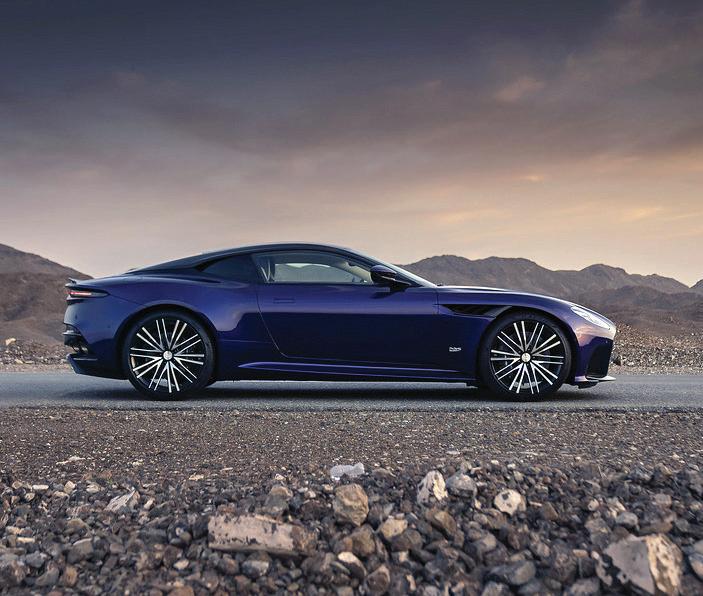
5 minute read
TheHAUTE LISTAuto
BY TIM LAPPEN
ASTON MARTIN DBS SUPERLEGGERA COUPE Superlight, Superfast and Superfun
WHEN I WAS A KID, THE ULTIMATE TOY WAS THE SCALEXTRIC SLOT-CAR SET. The British company manufactured several types of motorized toys, including cars which ran on clockwork motors; but, in 1957, their world (and mine) changed when they created an electric toy car which ran on a track and which allowed the player to control the speed. No, I didn’t get such a toy, but my luck was only one-degree-of-separation. Don, my next-door neighbor and best friend, was one of four boys in his family, so his parents apparently justified the Christmas purchase by amortizing it among the four brothers. Luckily for me, Don was the oldest, so he and I pretty much had the run of the house when it came to the shiny new Scalextric.
What does this have to do with Aston Martin? In those years, the primo Formula One racing machines were Ferrari, Mercedes, Maserati, Alfa Romeo, and Aston Martin.
Each car’s distinctive grille and its country-color livery made for the same resplendent hues on the slot-car track as they did on the world’s Formula One circuits. And the Aston Martins in British-racing green (BRG) had an unusual mouth. Marek Reichman, Aston Martin’s chief creative officer, said that, “If you were being very simplistic, you could say it was a box pushing out of an organic oval shape, with smoothed corners.” The Robb Report simply refers to it as the “moustache.” Either way, it started with the form-follows-function approach to allow as much airflow into the tall radiator at the center, with side areas to help cool the front brakes. Whatever it’s called, one can tell in an instant that’s it’s an Aston Martin approaching. Similarly, we kids could tell which slot-car was the Aston, one of our BRG favorites. Thus began my lifelong love of all things created by the storied brand.
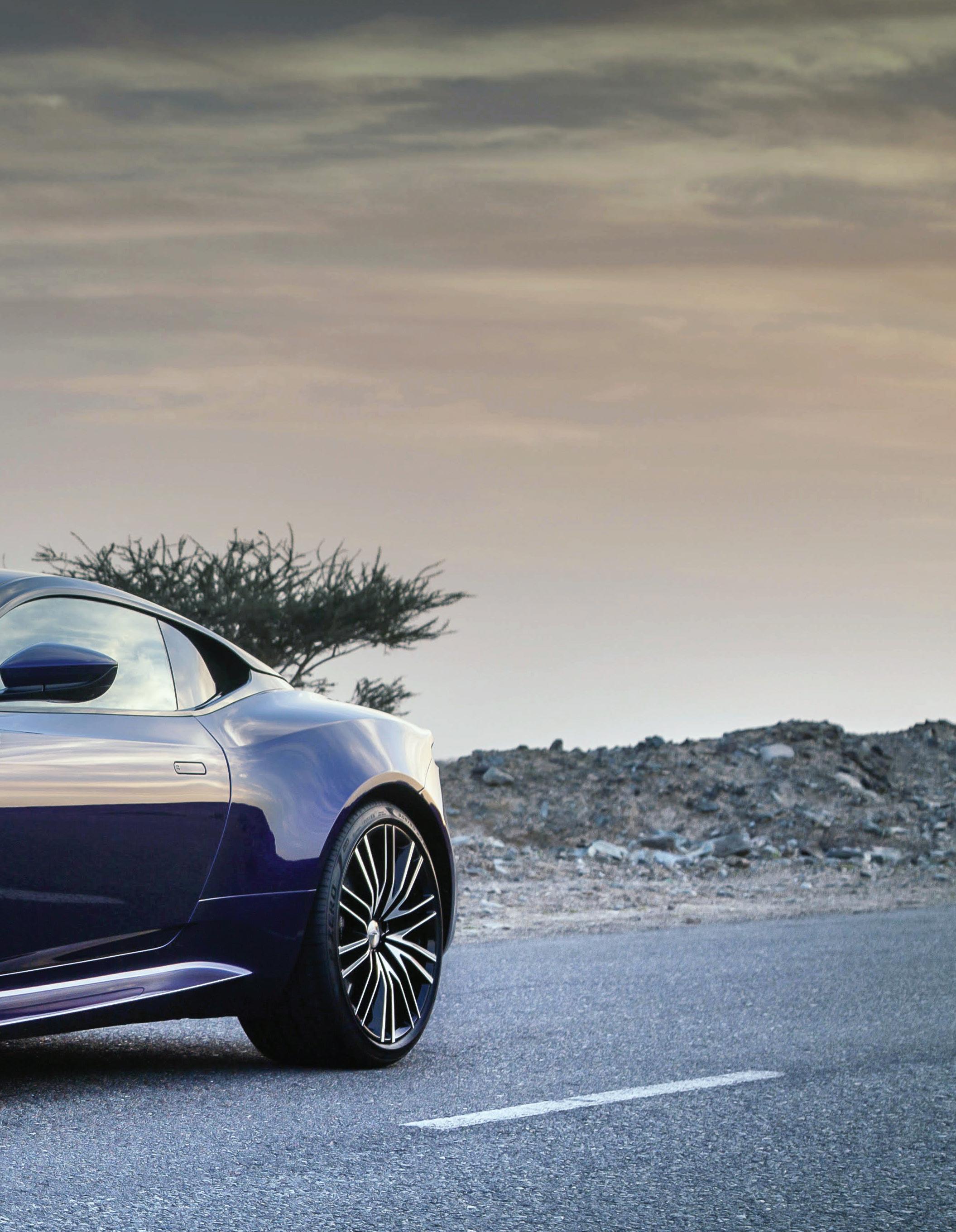
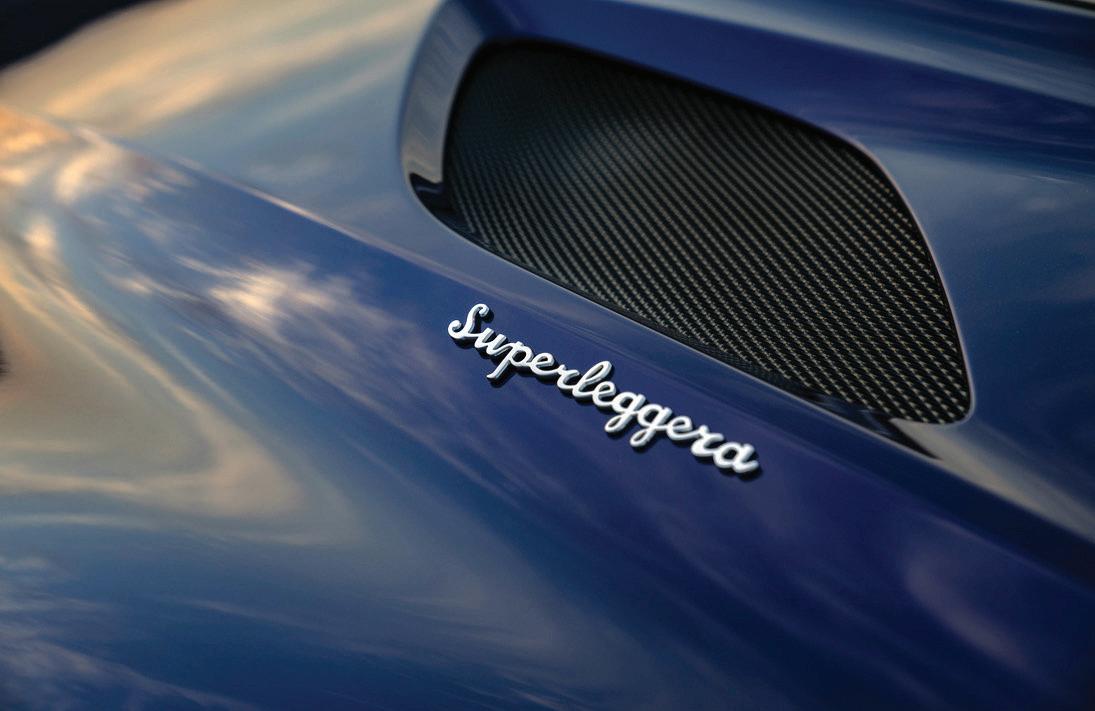
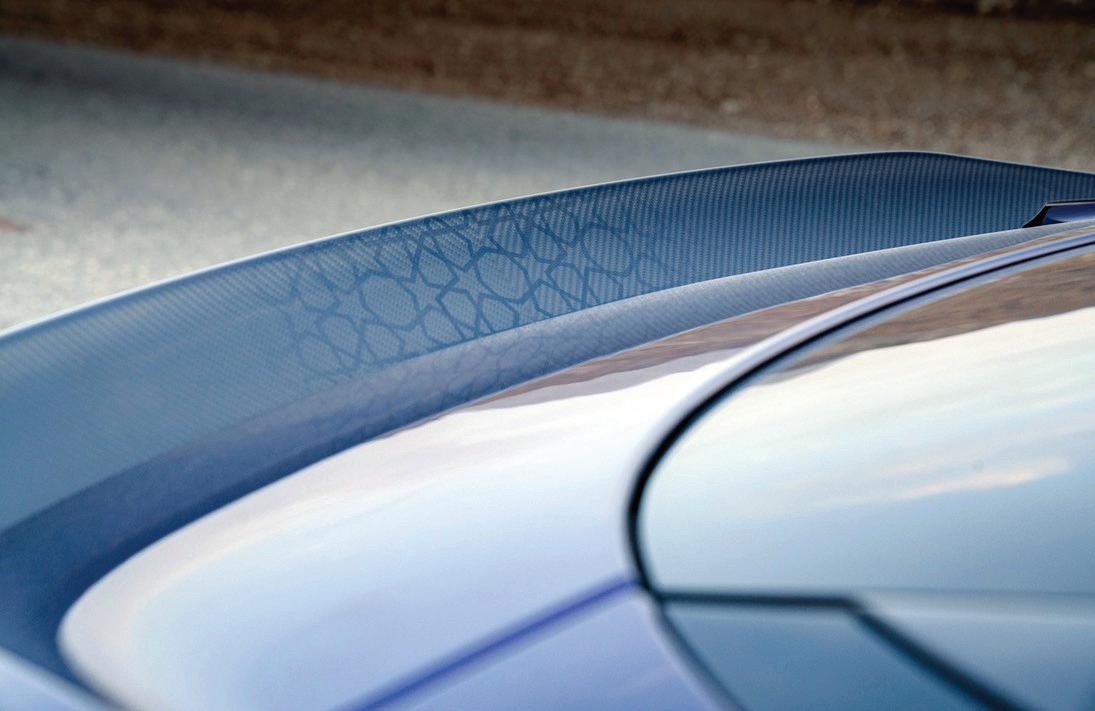
A lifelong petrol-holic, mechanic (cars, motorcycles, boats), and automotive journalist since penning a column for his high school newspaper, internationally rec- ognized attorney Tim Lappen is a partner at a major Los Angeles-based law firm, where he chairs the firm’s Family Office Group and its Luxury Home Group and is, of course, a member of its Motor Vehicle Group. He can be reached at tlappen@gmail.com.
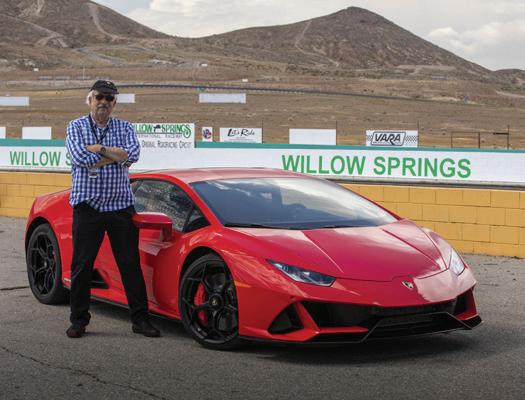
TheHAUTE LISTAuto
And speaking of “storied,” any paean to Aston Martins must give a nod to Sir Ian Fleming, author of innumerable James Bond books in the 1950s and 1960s. For verisimilitude, Sir Ian had a penchant for naming real products to be utilized by Agent 007, including his ever-present Walther PPK pistol (a bob to a weapon design which was novel when the Bond stories were written) and his trusty steed, which always was an Aston Martin (though subsequent movie adaptations of his books gave Commander Bond a variety of vehicles, depending on the plans created by the film’s marketing team).
So, with the above background in mind, let’s focus on the DBS Superleggera Coupe, the ultimate road-going Aston Martin of today.
The DBS name first was used by Aston in honor of David Brown, its famous owner and chairman, from the late 1940s until the early 1970s. Superleggera, which means “superlight,” is a trademark of an Italian coachbuilder used under license by Aston. This gorgeous, 2-door coupe is a gentleman’s and gentlelady’s touring car of the first order. With prodigious power (a twin-turbo V12 pumping out 715 HP and 663 foot-pounds of torque), the car can cruise all day at triple digits (local laws may apply) and top out at 211 mph, having arrived there quickly enough, given a 0-60 time of about 3.5 seconds. This is the most powerful road car Aston Martin ever has produced.
The 8-speed transaxle is located between the rear wheels, which helps provide an excellent front-to-rear weight balance, and offers up butter-smooth and lightning-quick shifts, either automatically or through the driver’s use of the metal paddle shifters. With carbon fiber aplenty, the DBS earns its Superleggera moniker: the bonnet (hood), boot (trunk), splitter, and diffuser are incredibly light (the car is an impressive 154 pounds
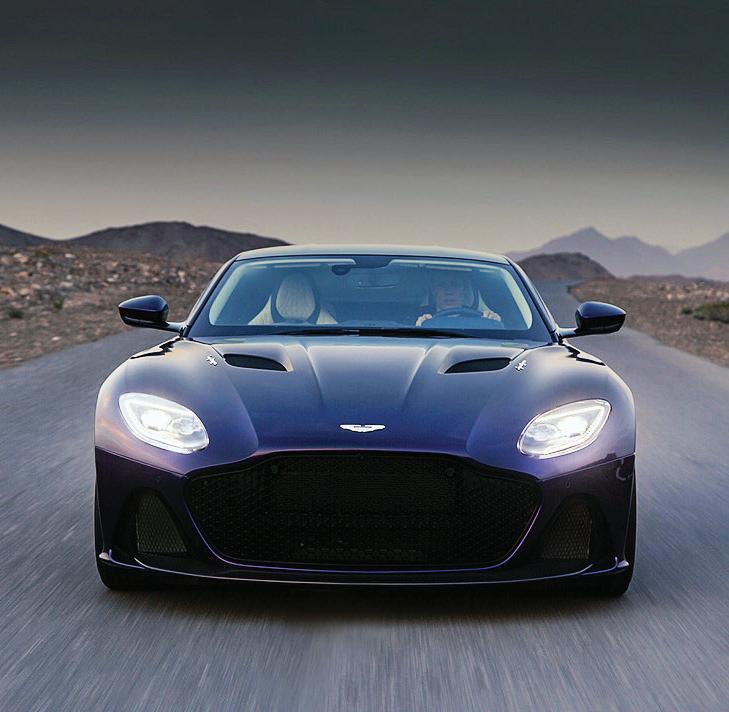
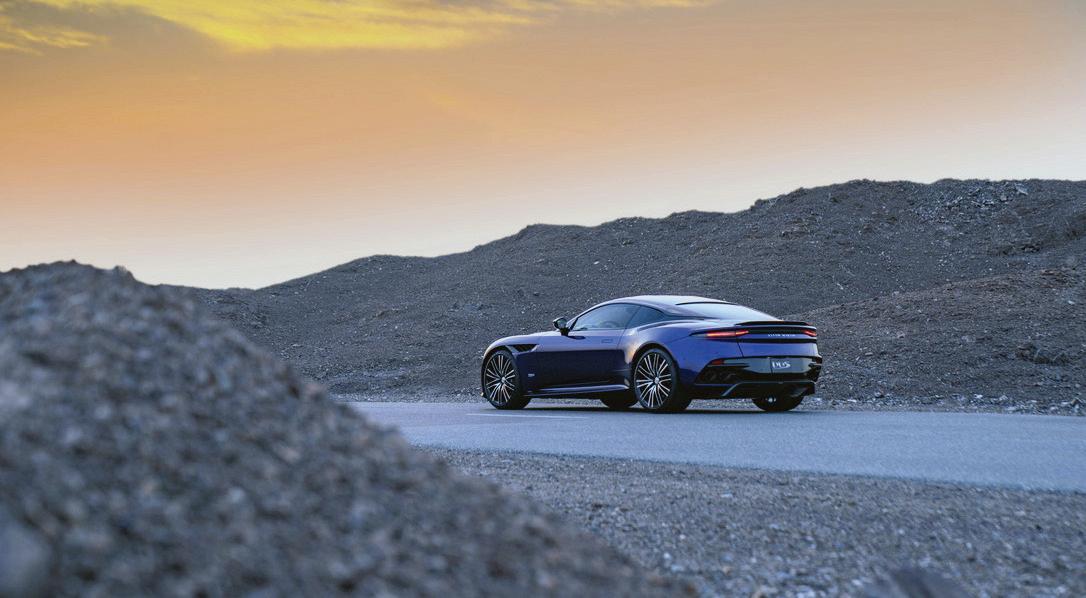
lighter than its DB11 cousin). Its 21-inch alloy wheels provide a strong stance and the fat tires (20 mm wider at the rear than the DB11’s) give the DBS an aggressive stance and also provide able assistance in cornering.
But, to me, the strength of the Aston Martin is not in its metrics, impressive as they are, but in how the entire package presents and performs. The car is flat-out beautiful from any angle, almost resembling fine art more than a motor vehicle. Sinuous lines and curves swoop and slide into a car which looks born of the wind.
The interior befits a car with an exterior which offers such promise. Sumptuous English hides abound. Leather is everywhere and much of it has been quilted (“triaxially” in “my” DBS, thanks to the tick of a $3,190 option box), with carbon fiber inlay on the trim (another box ticked, this time $4,545). An 8-inch navigation screen sits midship on the dash, both functional and appropriate to a car of its standing and all the better to see fore and aft with the front and back cameras that are so necessary with the car’s low stance and its carbon fiber first-responders.
My loan (thank you, Aston Martin!) arrived in “Cobalt Blue” with black leather interior and 21-inch, forged, “Y Spoke,” gloss black, diamond turned rims (yet another box ticked, this one for $3,190). Start-up is not overly rambunctious, but the driver does have three modes from which to choose—GT, Sport, and Sport Plus—which successively provide more power with less throttle movement, tighter suspension, louder exhaust, and more. To my ear (and with apologies possibly needed to my neighbors), Sport Plus is the only way to go, as it allows the DBS to sound as great as it looks and goes.
The base price is just over $300,000, and “mine” added about $27,000 in options; but, it all seemed well worth the price for the thrill it provided on highways, in the canyons, and on the twisties above Los Angeles.
